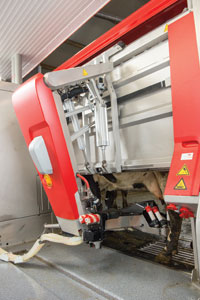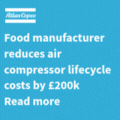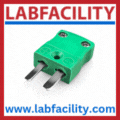
Posted to News on 21st Mar 2019, 00:00
Robotic milking machine boosts farming efficiency
An innovative hybrid electromechanical and pneumatic robotic arm, delivered as a preassembled unit, is at the heart of a new automated milking machine which offers increased efficiency and reliability, with smooth movement and high performance.

It is reckoned that by 2050, farms will need to produce 70% more food than they do today to feed the growing population; but they will need to be able to feed that population in a sustainable way. This might seem like an impossible goal, yet dairy farm specialist Lely believes it is possible through innovation. And the Netherlands-based company should know; since its formation in 1948, it has been directing all of its efforts towards creating a sustainable, profitable and enjoyable future in farming – both for the farmer and the animals.
With the cow as its focal point, Lely develops premium robotics and data systems that increase animal welfare, flexibility and production on the dairy farm. It brought its first automated milking machine to market in 1992, and has continued to improve on that initial design over the past 25 years, culminating in the development of the Astronaut A5 milking machine in 2018. To reap the greatest benefits from technologies which Lely acknowledged were developing rapidly, the company recognised the need to work with a technology partner in the design of the A5 – and it found that partner in Festo.
Lely and Festo had worked together on the previous generations of the Astronaut, the A3 and A4, in a relationship that has seen Festo move from simply a component supplier to a strategic business partner. The culmination of this partnership is the robot arm for the A5, built around a hybrid design of electromechanical and pneumatic technologies, and supplied to Lely as pre-assembled unit, ready for installation into the A5. As well as the required functionality, the design also had to address the challenging environment, and ensure reliability despite high levels of dirt, ammonia and humidity.
The hybrid arm in the Astronaut A5 is set into motion by two Festo ESBF electric cylinders ESBF and a customised, horizontal toothed belt axis. With its smooth surfaces and in clean look design, the ESBF is easy to clean, making it less susceptible to contamination. The actuators are powered by customised Festo EMCA motors. The complete EMCA solution for positioning the electromechanical drives and controlling format changeovers consists of a maintenance- and wear-free EC motor, as well as a motor controller including power electronics. This avoids long motor cables, improves electromagnetic compatibility and reduces installation effort and space requirements. Valve terminals type VTUB-12 valve terminals control the process valves for the milking process.
Compared to the servo-pneumatic and hybrid predecessor technologies used in Astronaut A3 and A4, the electrically actuated powered robot arm has clear advantages: its motion is gentler, and it’s more energy-efficient and faster because it requires 30% less time to place the teat cups on the cow. And installation time is also reduced thanks to the use of quick connectors. Operating and maintenance costs, and thus the total cost of ownership, are lower as well.
The mechatronics solution developed by Lely and Festo doesn’t work without software, with the software team from Festo’s systems solutions division in Esslingen, Germany, developing the motion software for the fully automated milking robot. “We take advantage of Festo’s know-how so that we can concentrate on our core areas of expertise for the development of the overall Astronaut system,” reports Martijn Boelens, vice president for customer solutions at Lely.
Dr Jan Bredau, head of systems engineering at Festo headquarters in Esslingen, adds: “The application software team creates software modules that aren’t only suitable for fulfilling the specific requirements of customer projects, but can also be used again for other projects.” Application software is implemented using function blocks, libraries or sample programs. The focus is on the Codesys language specified by IEC61131-3, and Festo control systems. The team simulates the software functions with Matlab Simulink.
The experience gained from the milking robot’s complex motion task, for example using SoftMotion, is being integrated into other software libraries. “The benefit for our customer is that motion sequences can be easily configured via an intuitive customer interface without any programming knowledge,” says Bredau.
Where the Astronaut A5 is deployed on a farm, each cow wears small transmitter chip on which data such as size, weight, recommended feed quantity and last milking time are saved. When a cow enters the milking stanchion, it is identified and the management software decides if the cow is ready to be milked. If it is, then the robot system is activated. By offering availability 24 hours a day, seven days a week, the machine enables the cows to be milked whenever they are ready, thus making life much more comfortable for the animal. The automated system also lifts a heavy burden of manual labour from the farm, helping to make life easier for farmers.
From its factory in the Netherlands, Lely manufactures some 2800 milking machines each year – all built to order – in what is a fast growing market. Indeed, the company believes that, with a couple of years, the dairy industry will be fully robotic.





